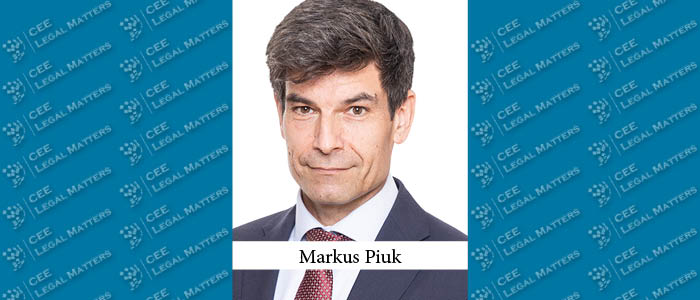M&A in the CEE region has been a captivating theater of evolving trends and geopolitical dynamics of late. Schoenherr Partner Markus Piuk shares his insights on the current market trends and delves into the influence of the US-China relationship, the status of Russian-based transactions, the resilience of the CEE M&A market, and the prospects of industry consolidation and growth.
CEELM: What’s the latest on M&A activity in CEE?
Piuk: The markets are more active than I expected: there is a lot of movement, despite the not-so-great economic news and the conflict in Ukraine. And there is comparatively more M&A activity in the region, yet on a smaller scale than what’s being reported by colleagues in Western jurisdictions. The more you look West, the slower it is – but with larger transactions.
CEELM: What is driving the M&A work in the region?
Piuk: The M&A levels in the CEE region can be attributed to a multitude of factors, geopolitics not the least of those. Notably, the strained US-China relationship has prompted Chinese investors to look beyond their traditional markets. CEE has become appealing due to its relative stability and growing economic power. Chinese investors have restructured their approach, enhancing their M&A teams and thoroughly understanding the business landscape in the Eastern EU.
Poland, the Czech Republic, Romania, and Hungary are top contenders for Chinese investment, each offering distinct opportunities. Hungary works best for government-controlled companies, while the others are targeted more for private companies. And there is also quite an interest in Turkiye. Ultimately, Chinese investors are screening and looking for investment opportunities across the region and are much more prepared to adhere to local and EU M&A rules. I would assume there will be a fair share of Chinese-rooted M&A work in the future.
Additionally, Russian-based M&A work, which had diminished, is now making a comeback for a good reason: for many major regional or global transactions ties with Russia are almost a given. Depending on the nationality of the buyer, there needs to be a carve-out of the Russian assets from the transaction perimeter. And that’s not always easy due to the restrictions in place: you need an actual decree signed by the Russian government. However, we’re happy to report we managed to get that for a couple of transactions. So, it’s becoming a workable solution, which is good news for transactions that are on hold: it is now possible to implement direct carve-out of Russian assets.
Finally, the region's local capital, particularly in Poland, the Czech Republic, Hungary, and Romania, has also driven substantial activity. That would have been my guess 15 years ago: to have strong local capital and sizable activity driven by local money, with true regional players. And this is great news and a factor of force for the entire region – the capital is already here, ready to be deployed locally. Serbia also has some emerging regional players reaching out to the former Yugoslav countries and further afield (in sectors like online gambling). And the best thing about all this? It’s looking like local entrepreneurs are showing confidence in the region and its prospects – they no longer feel the need to move their money to the west.
CEELM: And what can you tell us about the buyers, the sellers, and the most attractive targets?
Piuk: Buyers in the CEE region – including the Chinese investors mentioned earlier – are more prepared and informed than ever. They seek to adhere to EU regulations while targeting companies that fit their strategic goals. Still, I would say we’re yet under the spell of a mismatch in price expectations. Given the context, purchasers expect to buy cheap – which doesn’t happen, as almost nobody is pressured to sell for now. Sellers, on the other hand, still have the price valuations from 18 months ago in mind. That price mismatch will take some time to resolve. But when those price expectations do meet each other, we expect many more transactions to happen.
Regarding industries, interestingly, M&A activity in the CEE region isn't limited to specific industries. Infrastructure and energy projects are thriving, but we're witnessing activity across various sectors. Notably, the technology and private equity sectors have faced some investor caution in recent times, and it’s become more difficult to raise venture capital. A brilliant idea that would have drowned in money two years ago is having difficulty today. But that’s not necessarily CEE specific, either. And the region's entrepreneurs are more used to that reality, so they are adapting and continuing to pursue opportunities. Finally, distressed asset transactions seem likely to increase in the future, driven by a challenging economic environment and higher interest rates.
CEELM: Following from that, how do you expect the markets to shape up in the future?
Piuk: Right now, CEE markets are not that young anymore. All large international groups have already made their decisions about whether to focus on our specific markets. So, I’m expecting further consolidation in retail, insurance, and banks. It’s a healthy consolidation process that’s been on the cards for a while – allowing players to refocus on core markets. As the region is increasing in wealth, we’ll also see international players step in with production facilities or distribution assets and invest in the region. That will be balanced by some others deciding to leave. All this repositioning will lead to more M&A work. But the one constant is that the market is increasing in size and economic power. The CEE region is on the map, and every player will need to have a plan in place, essentially for how to engage or not engage in CEE.
And I also expect there will be opportunistic purchasing, as we’re approaching a more challenging economic environment with rather high interest rates and a slowing economy. So distressed asset transactions might increase, primarily buy-restructure-sell transactions, which is always good work for lawyers, of course. Finally, buyers are increasingly focusing on the great human capital in CEE. And that’s a strong proposition: you’re buying into quality human capital and into markets that are outgrowing the Western EU. In the end, it’s just simple math on the returns you can expect.
CEELM: And what challenges do you foresee for M&A lawyers and their work in the coming year?
Piuk: Looking ahead, the next 12 months hold promise for the M&A practice in CEE. If distressed transactions become more prevalent, M&A lawyers can expect a surge in work that requires speed and precision. Despite potential challenges, the region’s economic power is on the rise, so I don’t think we’ll lack work.
Still, just like in many other parts of the world, the legal profession in CEE is experiencing challenges related to talent acquisition and retention. The younger generation seeks a different work-life balance and a flexible environment, and law firms are actively exploring solutions to cater to these needs. While AI and technological investments are becoming increasingly relevant, the human touch will remain crucial, especially in negotiations and certain drafting processes – so I don’t see the war for talent abating anytime soon.




